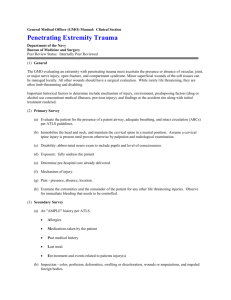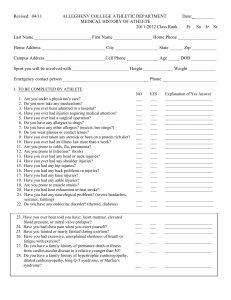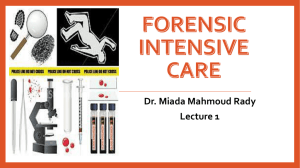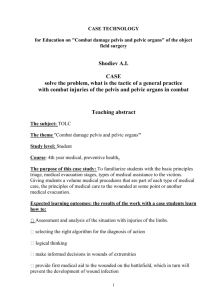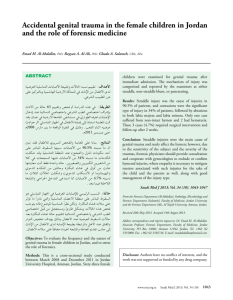Press Here To Change from HTML to Word Document
advertisement
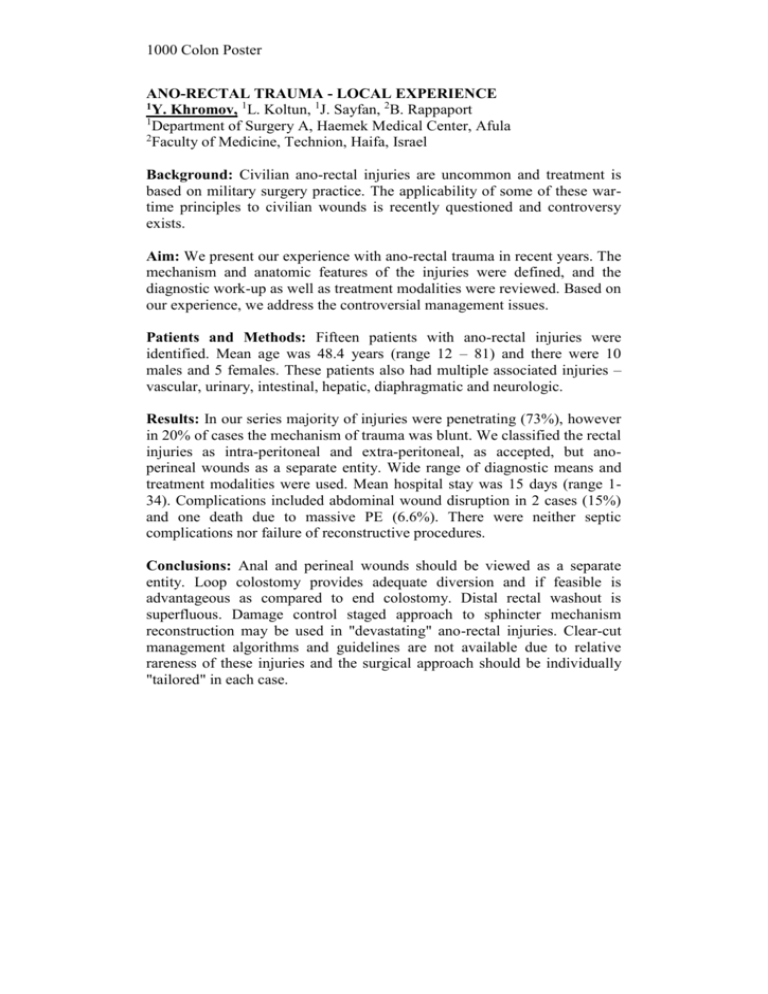
1000 Colon Poster ANO-RECTAL TRAUMA - LOCAL EXPERIENCE 1Y. Khromov, 1L. Koltun, 1J. Sayfan, 2B. Rappaport 1 Department of Surgery A, Haemek Medical Center, Afula 2 Faculty of Medicine, Technion, Haifa, Israel Background: Civilian ano-rectal injuries are uncommon and treatment is based on military surgery practice. The applicability of some of these wartime principles to civilian wounds is recently questioned and controversy exists. Aim: We present our experience with ano-rectal trauma in recent years. The mechanism and anatomic features of the injuries were defined, and the diagnostic work-up as well as treatment modalities were reviewed. Based on our experience, we address the controversial management issues. Patients and Methods: Fifteen patients with ano-rectal injuries were identified. Mean age was 48.4 years (range 12 – 81) and there were 10 males and 5 females. These patients also had multiple associated injuries – vascular, urinary, intestinal, hepatic, diaphragmatic and neurologic. Results: In our series majority of injuries were penetrating (73%), however in 20% of cases the mechanism of trauma was blunt. We classified the rectal injuries as intra-peritoneal and extra-peritoneal, as accepted, but anoperineal wounds as a separate entity. Wide range of diagnostic means and treatment modalities were used. Mean hospital stay was 15 days (range 134). Complications included abdominal wound disruption in 2 cases (15%) and one death due to massive PE (6.6%). There were neither septic complications nor failure of reconstructive procedures. Conclusions: Anal and perineal wounds should be viewed as a separate entity. Loop colostomy provides adequate diversion and if feasible is advantageous as compared to end colostomy. Distal rectal washout is superfluous. Damage control staged approach to sphincter mechanism reconstruction may be used in "devastating" ano-rectal injuries. Clear-cut management algorithms and guidelines are not available due to relative rareness of these injuries and the surgical approach should be individually "tailored" in each case.





